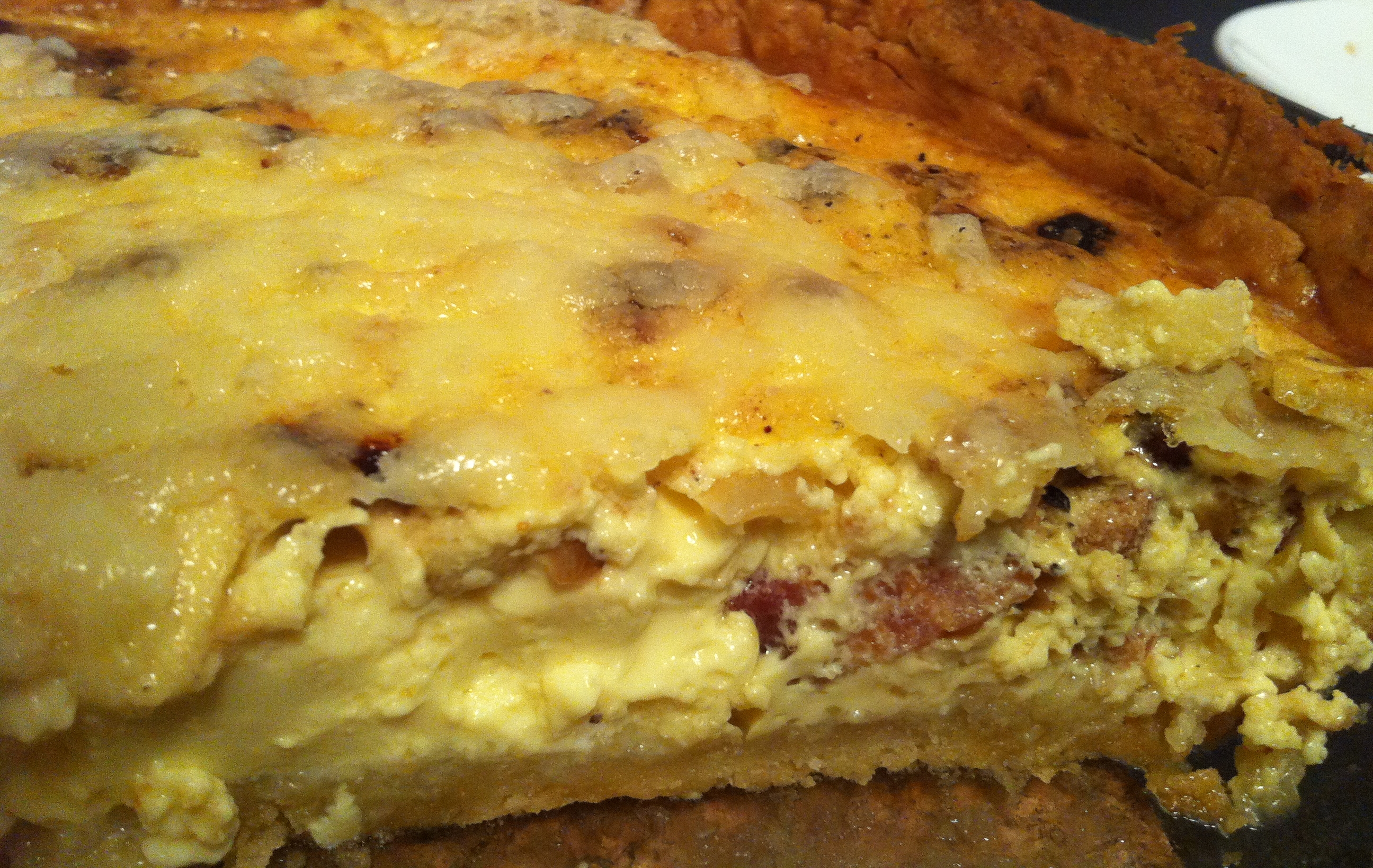I love to make and eat quiche. In fact, there was hardly a week last year that would pass where there wasn't a quiche in my refrigerator because I just love quiche that much. Why? Well, it's great any time of day, it reheats well, it can feed a crowd, and it doesn't have to be complicated or actively time consuming to make.

But the best part of quiche is that you only need to know one basic method to make virtually any everyday quiche. Of course, you can always level up and use more complex methods to make 3-inch tall spinach quiches in springform pans, but you have to care more about the specific ingredients you use because their weights become a factor you must incorporate into the recipe. Everyday quiches follow a simple, easy to remember method:
Roll out a pie crust (homemade is best, see below) and fit it into a pie pan. I like to use glass pie pans because it's easiest to see how much the crust has baked during blind baking, as the top will be covered with foil. Blind bake the pie crust by covering it with aluminum foil then filling the foil with pie weights for about 15 minutes at 450 degrees. If you don't have pie weights, dry rice or beans can be used instead, but you won't get as much mileage out of them if you make pies a lot. (You also probably won't be able to eat them later.) Blind baking is important in many pies because crust often needs to bake at higher temperatures than the rest of the pie to achieve the desired flaky texture.
If you're using a harder cheese, like cheddar or Gruyère, top the crust with cheese (here, I used sharp cheddar) after blind baking the crust and bake for another 5 minutes at 375 degrees. This keeps heavier cheeses separate from the egg and cream or milk quiche base, resulting in a lighter, fluffier quiche.

A quiche's ingredients can really be whatever you want. Commonly used ingredients include bacon, bell peppers, onions, asparagus, spinach, and mushrooms, but you should really only use this list as inspiration. My favorite quiche combination, used here, is crispy bacon, lightly caramelized onions, green apples (they're fantastic in quiche), and sharp cheddar.
Eggs obviously play an important role in quiche, and the addition of cream or milk makes them fluffy. I find that the easiest way to get the proportion of egg to liquid right in the quiche base is to crack your eggs into a measuring cup and fill with cream or milk (you can use either or any mixture of the two) until the measuring cup contains 1/2 cups times the number of eggs worth of substance. I used three eggs, so I filled the measuring cup to 1 1/2 cups.

Next, transfer the egg mixture to a mixing bowl, add a pinch of nutmeg and some salt and freshly ground pepper, and beat together until very well blended. Layer the ingredients in the pie crust, then pour the egg mixture over the ingredients.

Bake the quiche for 45 minutes at 375 degrees. I like to take the quiche out of the oven 10 minutes early and top with more cheese if I'm using a hard cheese to add another texture to the smooth, light pie.

In my opinion, the best pie crusts are made from scratch. Homemade pie crusts tend to be butterier than what you can find at a store, and they freeze just as nicely for long-term storage. I suggest making a few at a time if you plan to bake more than one pie over the course of the next few months. The following recipe is a great pie crust to have on hand because it's only lightly sweetened with sugar, so it works well in both savory and sweet pies.
Lightly sweet pâte brisée
Ingredients:
- 1 cup flour - traditionally, this is 3/4 cups all-purpose flour + 1/4 cup cake flour, but honestly, I usually just use 1 cup bread flour because it's what's already out.
- 1/2 teaspoon salt
- 2 teaspoons granulated sugar
- 1/2 cup (1 stick) unsalted butter
- 1/4 cup ice water
Preparation:
- Combine 1/2 cup flour, salt, and sugar in a food processor and pulse a few times until mixed together.
- Add the thin slices of butter to the mixture and pulse until even crumbs form.
- Add the remaining 1/2 cup flour and pulse to combine.
- Add the ice water and pulse until the dough is fully incorporated. Freeze until ready to use, and defrost just enough so that the dough can be rolled out between two sheets of cling wrap or wax paper.
Makes one 9-inch pie crust.